Currently under construction, La Réunion Island’s New Coastal Route will be one of the world’s most important road infrastructures. The viaduct, the flagship of this multimodal communication axis, is a remarkable 5.4-kilometer structure designed to link Saint-Denis and Grande Chaloupe, skirting the coast more than 20 meters above sea level.
Designed to withstand cyclonic swells and ship strikes, it will accommodate six lanes, including two for public transport.
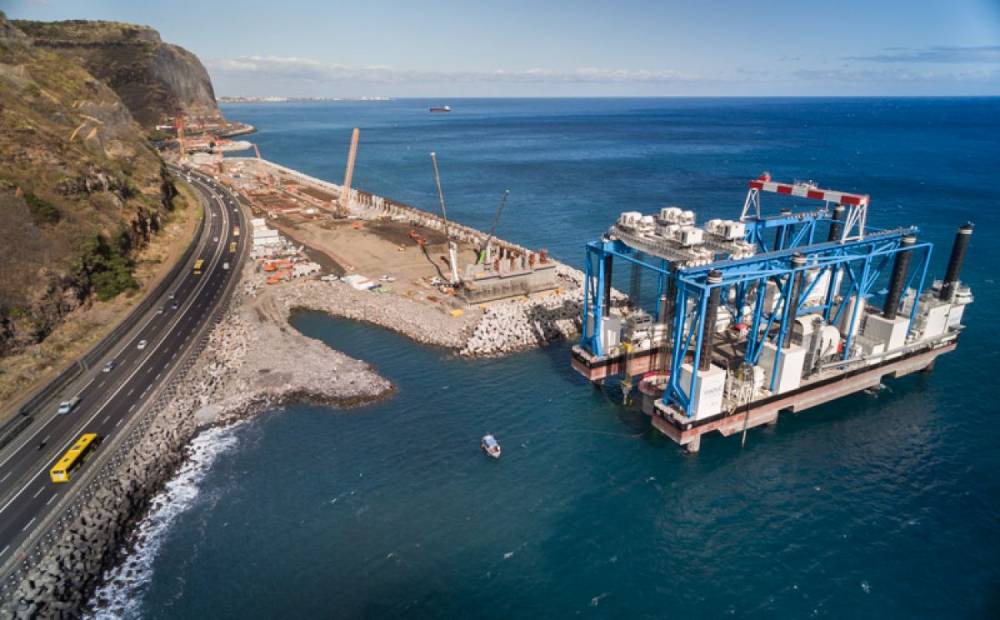
The structure’s deck will rest on 48 offshore piers, each made up of several elements. The piers will be transported one by one to their final location by a self-propelled, self-elevating barge of extraordinary dimensions, specially designed for this project in Reunion Island.
The operations involved in laying the piers from the barge’s overhead crane involved three types of constraint.
In March 2016, CADDEN won the tender for the monitoring system for the piers of this gigantic offshore viaduct, the largest in France.
To meet this dual challenge, CADDEN proposed an original solution, never before implemented, based on a Trimble laser tracker compensated in attitude and orientation and georeferenced in RTK (Real time kinematic). Mounted at a point on the barge, this system points a target placed on the bridge pier element to be installed and measures its displacement with absolute centimetric precision.
In addition, an inertial navigation system is installed on each of the installations: an Octans attitude and gyrocompass navigation system from iXblue on the barge, and a Hydrins inertial unit from iXblue on the bridge pier to be installed. The aim here is to ensure that the pier is perfectly oriented in its 3D space, so that it is perfectly vertical.
As integrator of the complete system, the Nantes-based company also developed a special interface for dialogue between the pile and the barge, including control tools, real-time visualization of position deviation from the theoretical position, and calibration tools.
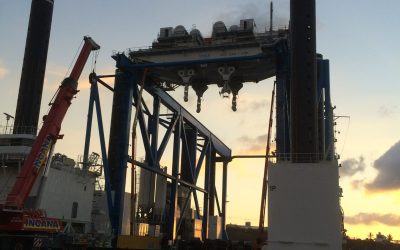
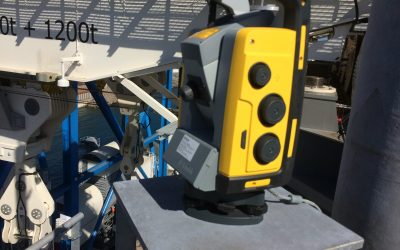
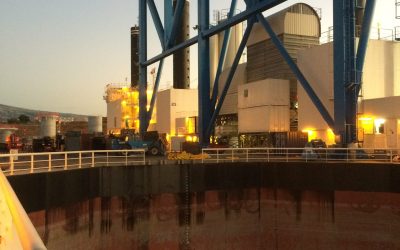
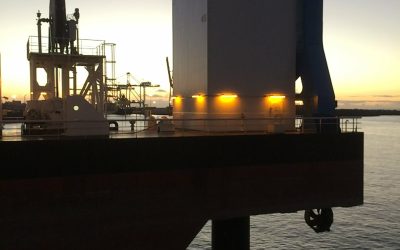
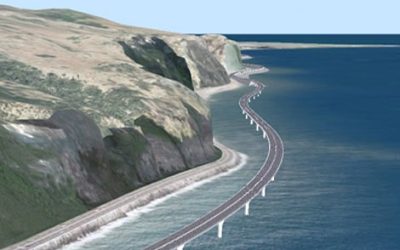
CADDEN was on site at the end of July 2016, guaranteeing the system’s smooth operation and final contractual accuracy, for turnkey delivery to the consortium awarded the Viaduc en mer contract (VINCI Construction Grands Projets, Dodin Campenon Bernard, Bouygues Travaux Publics and Demathieu Bard Construction) and user training.
Sylvain ANTOINE, CADDEN support engineer, was on site to integrate and calibrate the equipment, as well as train the teams.
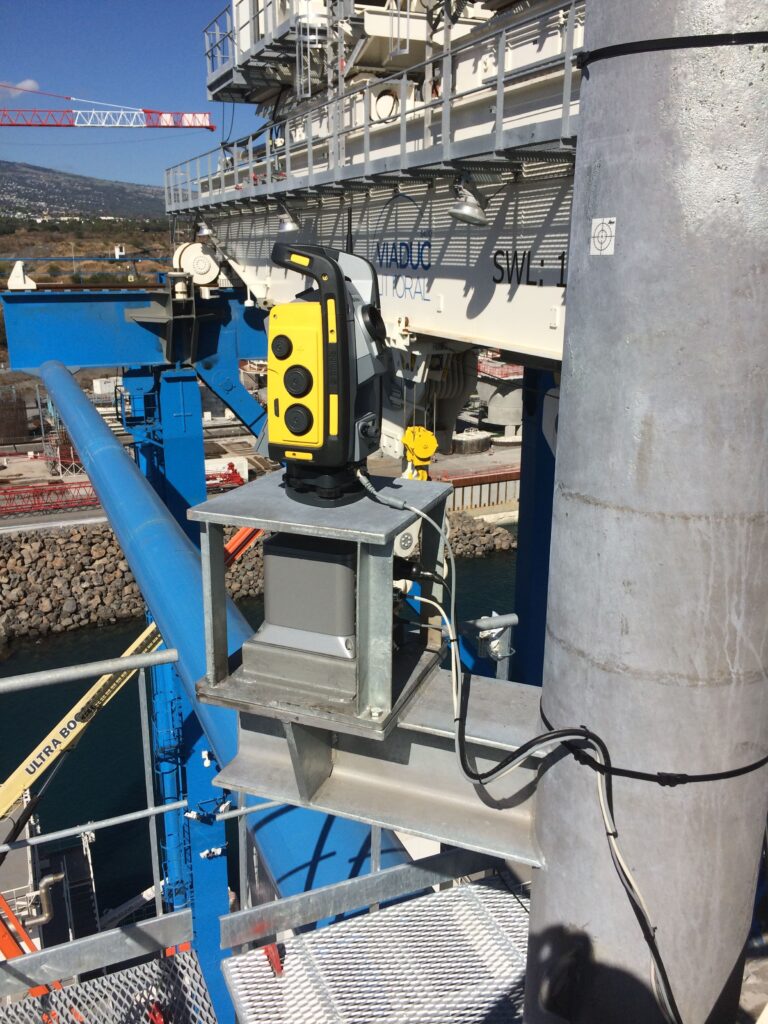
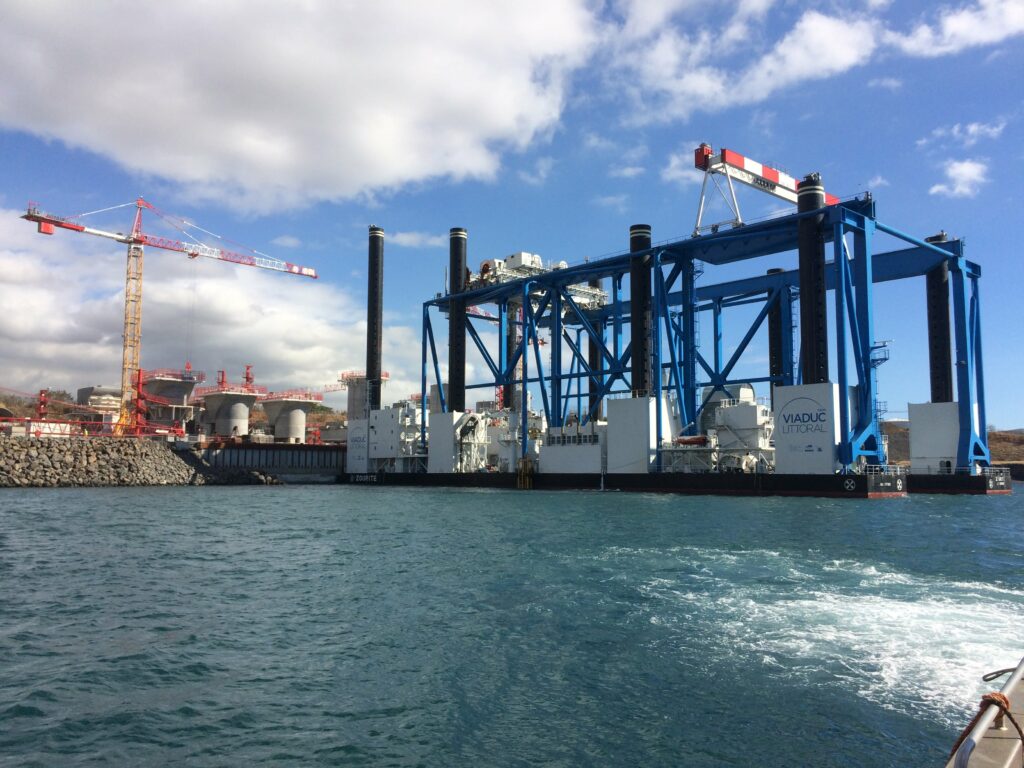
Started in August 2016, pile-laying operations will take place over 2 years, at an average rate of 2 piles per month. Initial measurements have shown a positioning accuracy of +/-5cm, in line with initial requirements.
Construction of the Nouvelle Route du Littoral began in 2016 and was completed in 2021. It was partially opened on August 28, 2022 on an initial 8.7 km section in the Saint-Denis to Grande Chaloupe direction only. The other sections will open progressively throughout 2022.
France’s largest viaduct has been fully open to traffic in both directions since March 1, 2023.
Did you like this article ?
Share it with your colleagues or friends

Tous droits réservés – 2021-2023
Vos données sont collectées et traitées pour vous envoyer notre newsletter et améliorer l’expérience utilisateur du site web. Dans ce cadre, le responsable du traitement est CADDEN. Vous disposez d’un droit d’accès, de rectification, et de suppression de vos données, ainsi que d’un droit de limitation, de portabilité ou d’opposition. Pour exercer ces droits, vous pouvez nous contacter via le formulaire de contact. Pour plus d’informations sur la façon dont nous traitons vos données personnelles, vous pouvez consulter notre Politique de confidentialité.